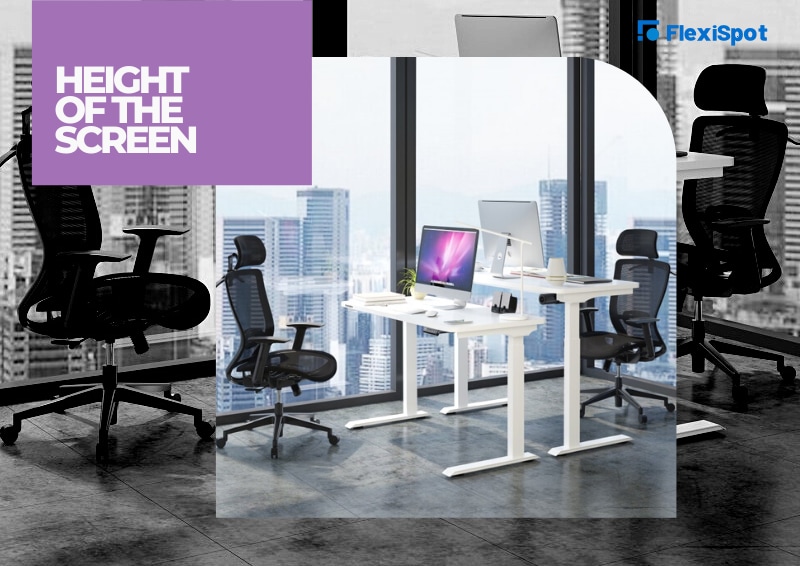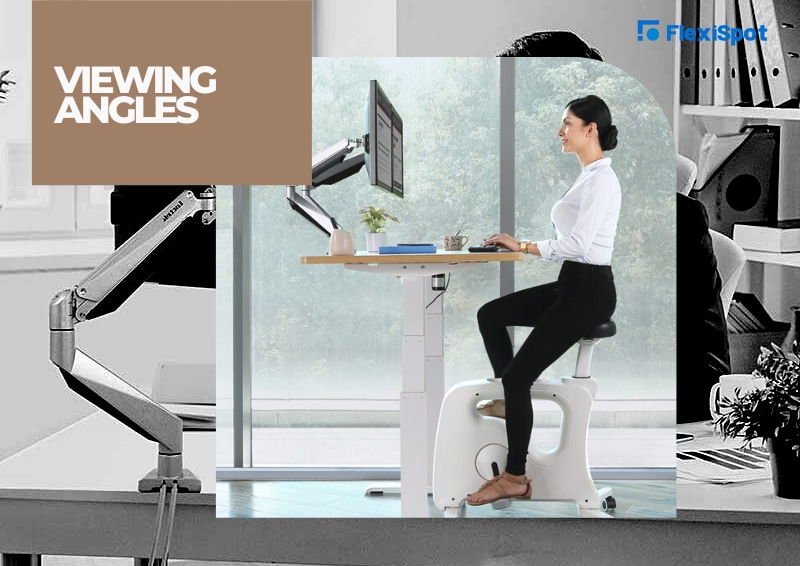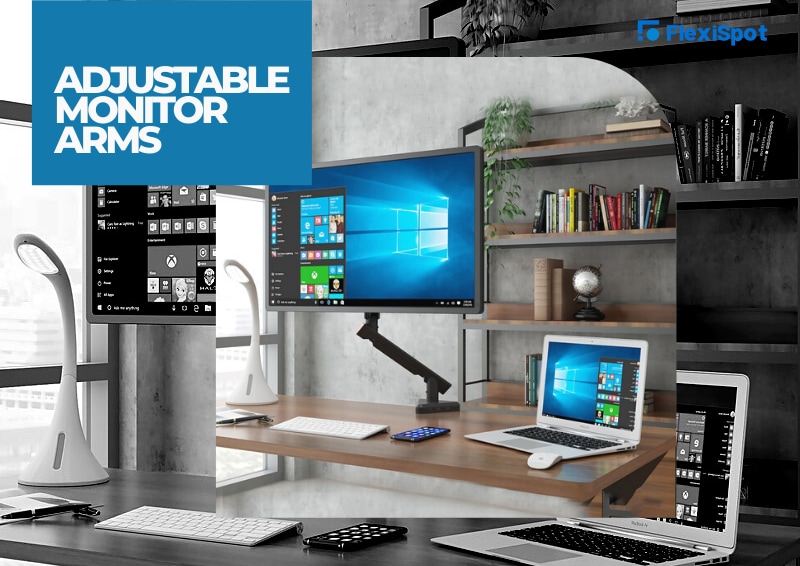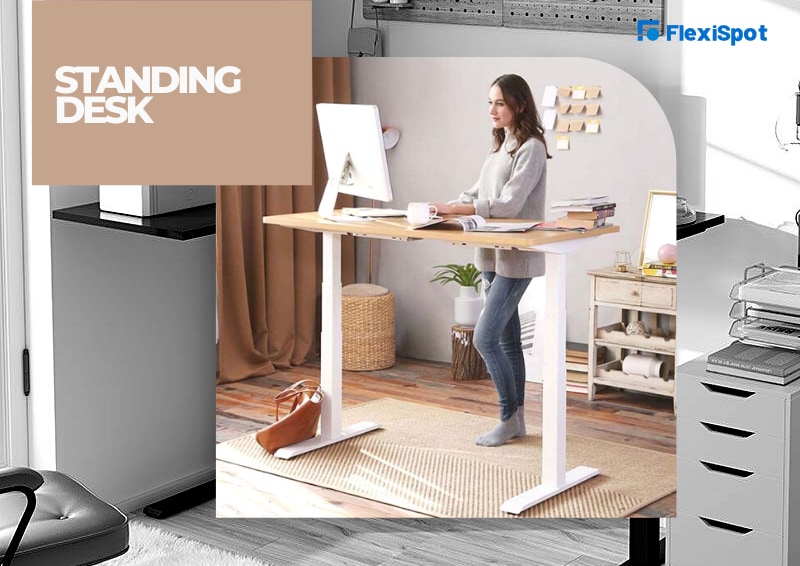Most jobs today are computer-based. It means the workers have to sit in front of their computers for several hours every day. As much as having a job that requires sitting all day long sounds comfortable and fun, it’s anything but that. Sitting in the same posture for long hours puts you at a higher risk of developing musculoskeletal problems, which can exacerbate and worsen into lifelong conditions if not taken care of well in time.
The awareness about workplace ergonomics is at an all-time high today. An increasing number of employers are investing in ergonomic furniture to ensure all their employees are comfortable and sitting in the correct posture.
Even after widespread awareness about ergonomics, one very important aspect of workplace ergonomics that most employers tend to overlook is the placement of computer monitors. The correct placement of the monitor is as important as the ergonomics of the office chair and work desk.
If you provide your employee with all the ergonomic furniture they need but fail to place their work monitors correctly, all your effort in the area of ergonomics is bound to go in vain.
This blog post is all about computer ergonomics. Continue reading ahead to know how you can ensure that your monitor is placed correctly.
Why are Computer Ergonomics So Important?
You may wonder why computer ergonomics are so important. Before we move on to listing the numerous factors that you must take into account when setting up the workplace computer, let’s first have a look at what can incorrect monitor placement can do to your health. Only then will you be more willing to make things right at work.
The monitor is what you’ll be staring at throughout your 8-hour shift every day. If it’s not placed right, you’ll start to feel the consequences over time, if not immediately. If your monitor isn’t placed according to your comfort, you’ll have to work in uncomfortable postures all day long.
If your monitor is too high, you’ll have to tilt your head backward to be able to get a good view of the screen. If it’s placed too low, you’ll have to bend your neck forward. In either case, you’ll get severe shoulder and neck pain.
One of the most common postures of computer users is having their upper body bent sideways or forward and their chin tilted upwards. If you’re currently sitting in this posture, know that your computer monitor needs to be adjusted.
Working in this posture will not only make you uncomfortable but will also lead to the development of musculoskeletal disorders. Other dangerous consequences include excessive strain on the eyes, leading to irritation, burning, headaches, and weakening of eyesight in the long run.
Some of the most common problems that computer users report today are a pain in the shoulders, neck, discomfort, and eyestrain, and all of these could be due to the incorrect placement of the monitor.
Factors to Consider for Monitor Placement
The placement of the monitor isn’t as straightforward as you thought it was. There are numerous considerations that you’ve got to take into account when setting up your workplace monitor. We’ve listed down some of the most important factors to help you place your monitor right.

1. Height of the Screen
The first and foremost factor to consider when setting up the computer at work is to ensure the correct height of the monitor. When we talk about height, it’s never a one size fits all solution. The correct height differs according to the body proportion.
The correct height for a short-heightened individual will be different than what’s the correct monitor height for a tall-heightened user. If you’ve got to tilt your chin, head, or neck to get a better view of the screen, the position of the monitor has to be re-adjusted.
Just like we said earlier, if the monitor is placed too high, you’ll have to tilt your chin upwards and your head and neck backward and if it’s too low, you’ll have to bend your head forward to get the best view of the screen. Both these postures are bound to give you neck and shoulder pain.
If you’re using a standing desk like the Height Adjustable Standing Desk E8, you can adjust the height of the computer monitor by adjusting the height of the work desk. It’s far more convenient and effective!

2. Viewing Distance
Another very important factor to consider for monitor placement is the viewing distance, that is, how close or far the computer screen is from you. If the screen is too far, you won’t be able to read what’s on the screen and to be able to do that, you’ll have to bend your upper body forward (which is one of the most dangerous postures to sit in).
If the screen is placed too close, you’ll be more exposed to the screen glare and the chances of eye strain will be very high. You should place the monitor just far enough to hit the sweet spot; a spot that gives you the best view of the screen without you having to tilt or bend any part of your body.
The ideal viewing distance is when the monitor is placed at a distance equal to the length of your extended arm. This should enable you to read what’s on the computer screen easily without putting excessive strain on your eyes or the body.

3. Viewing Angles
Not only should your monitor be placed at the correct height and distance, but it should be ensured that the monitor is placed at the correct viewing angle. The screen should not only be directly in front of you; not too high, nor too low – just right in front of you, but it should be at the right angle as well.
If the monitor is placed at an incorrect angle, you’re in for neck pain and if you don’t do anything about it soon, it can even mean lifelong damage to muscles and tendons due to excessive stress.
Ideally, if you manage to attain the perfect height of the monitor, the correct angle will follow. If you want us to get into specifics and not leave you guessing and calculating what the right viewing angle will be for you, here you go.
The screen should be placed such that it’s between your eye level and at least 30 degrees below the line of sight. It’s because your eyes are tuned to look straight ahead and down when they’re at rest and this position of the screen will facilitate the natural position of the eyes, thereby reducing the eyestrain.
If you want to run a test to check whether your monitor is placed at the right angle, simply observe if your eyes are at rest when you’re viewing the address bar of your browser. If you aren’t, the angle test is a fail and you’ve got to re-adjust.

4. Glare
Glare is an important consideration too. If you feel too much glare from the computer screen, you can automatically tell that the monitor is placed too close to your eyes and you’ve got to adjust the viewing distance.
The light from the surrounding light sources like the overhead fixtures of windows may also reflect from your computer screen and cause eyestrain. In that case, tilting the screen enough to reduce the reflection from surrounding light sources will help reduce glare. In short, glare is an important factor that can help you tell if the monitor is placed correctly or not.
How to Best Position Your Computer Monitor?
The next very important part of the discussion is how to position the computer monitor best? Well, we’ve got you covered in that area as well. You can relax because there are various tools and products available today that can help you position your monitor correctly. Let’s have a look at some of these options.

Adjustable Monitor Arms
This is the best ergonomic product out there to help you attain the best monitor position. This product comes with tilt-able and retractable arms. You can simply move the arms sideways, back and forth, or tilt them to ensure the perfect monitor height, viewing distance, and viewing angle.

Standing Desk
Another great way to ensure that your monitor is placed at the right height is a standing desk. You can raise or lower the desk according to your height and with that, you can adjust the height of your monitor as well.
The correct placement of the monitor is as important as sitting in the correct posture and working in adequate lighting at work because if the monitor isn’t placed right, your physical wellbeing will be at risk.
You may not feel the consequences of incorrect monitor placement in a few days but over a period of a few months, you’ll start to experience the consequences, and trust us when we say; you won’t like it. So, why wait for the worst to happen when you can make things right before things go in the other (wrong) direction?